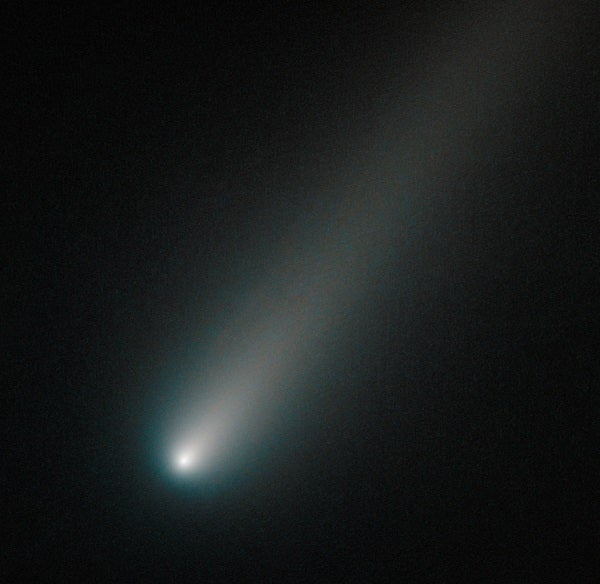In this NASA Hubble Space Telescope image taken on October 9, the comet’s solid nucleus is unresolved because it is so small. If the nucleus broke apart, then Hubble would have likely seen evidence for multiple fragments.
Moreover, the coma surrounding the comet’s nucleus is symmetric and smooth. This would probably not be the case if clusters of smaller fragments were flying along. What’s more, a polar jet of dust first seen in Hubble images taken in April is no longer visible and may have turned off.
This color composite image was assembled using two filters. The comet’s coma appears cyan, a greenish-blue color due to gas, while the tail is reddish due to dust streaming off the nucleus. The tail forms as dust particles are pushed away from the nucleus by the pressure of sunlight. The comet was inside Mars’ orbit and 177 million miles (285 million kilometers) from Earth when photographed. Comet ISON is predicted to make its closest approach to Earth on December 26, at a distance of 39.9 million miles (64.2 million kilometers).










